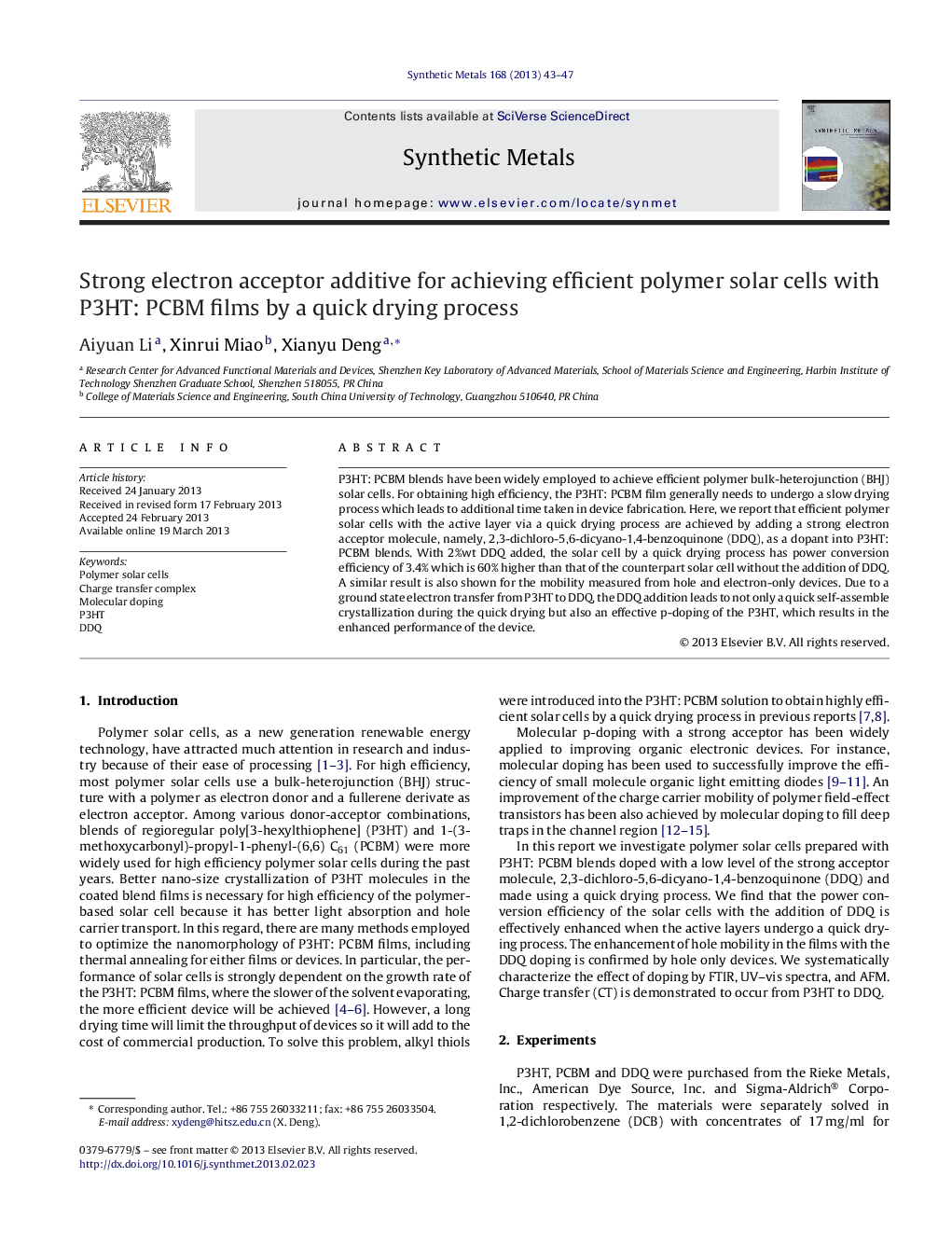| Article ID | Journal | Published Year | Pages | File Type |
|---|---|---|---|---|
| 1441439 | Synthetic Metals | 2013 | 5 Pages |
P3HT: PCBM blends have been widely employed to achieve efficient polymer bulk-heterojunction (BHJ) solar cells. For obtaining high efficiency, the P3HT: PCBM film generally needs to undergo a slow drying process which leads to additional time taken in device fabrication. Here, we report that efficient polymer solar cells with the active layer via a quick drying process are achieved by adding a strong electron acceptor molecule, namely, 2,3-dichloro-5,6-dicyano-1,4-benzoquinone (DDQ), as a dopant into P3HT: PCBM blends. With 2%wt DDQ added, the solar cell by a quick drying process has power conversion efficiency of 3.4% which is 60% higher than that of the counterpart solar cell without the addition of DDQ. A similar result is also shown for the mobility measured from hole and electron-only devices. Due to a ground state electron transfer from P3HT to DDQ, the DDQ addition leads to not only a quick self-assemble crystallization during the quick drying but also an effective p-doping of the P3HT, which results in the enhanced performance of the device.
Graphical abstractFigure optionsDownload full-size imageDownload as PowerPoint slideHighlights► A charge transfer additive is used in polymer solar cells. ► High efficieny is obtained for quick dried P3HT: PCBM based solar cells. ► Power conversion efficiency is highest 60% enhanced for devices with DDQ added. ► A quick drying process is important to shorten the fabrication time of devices.
